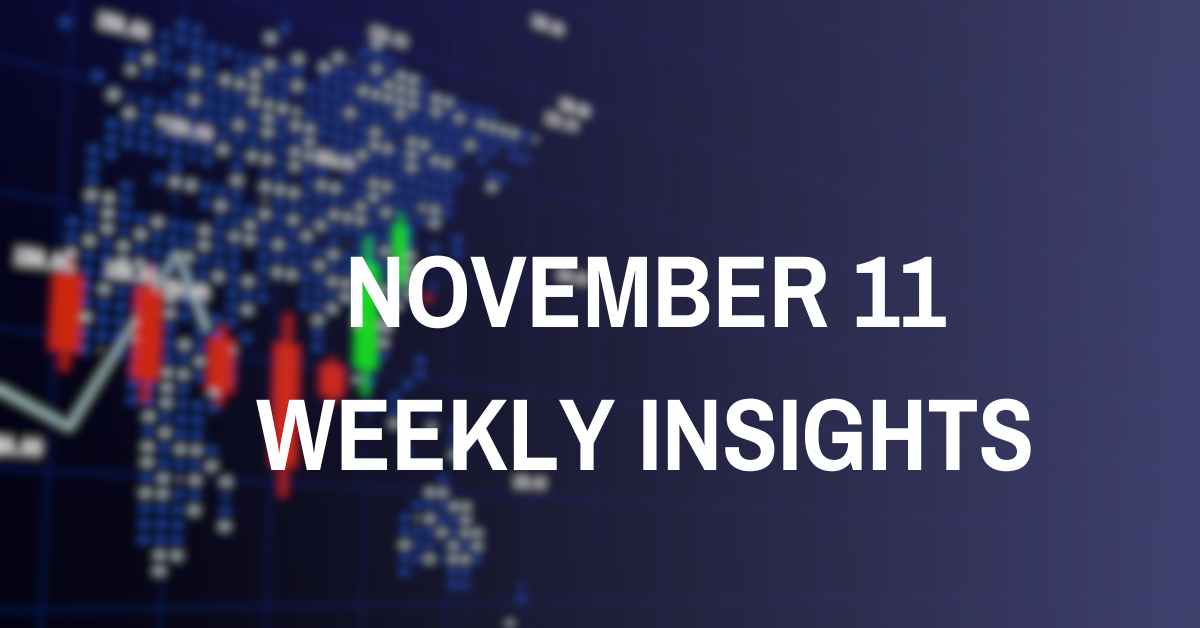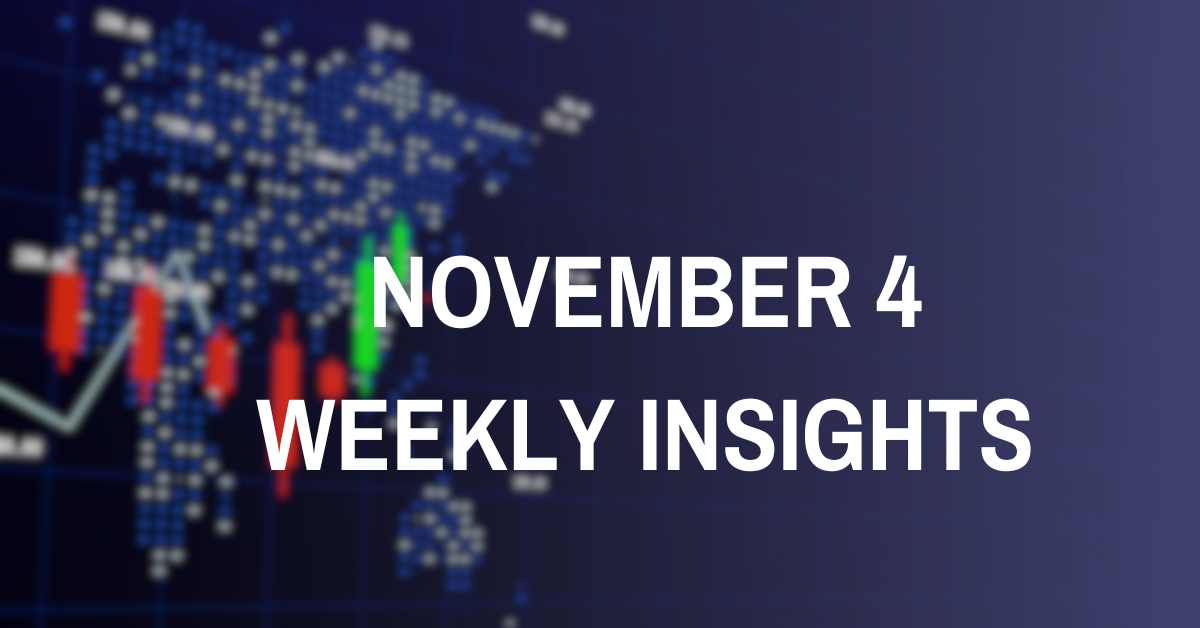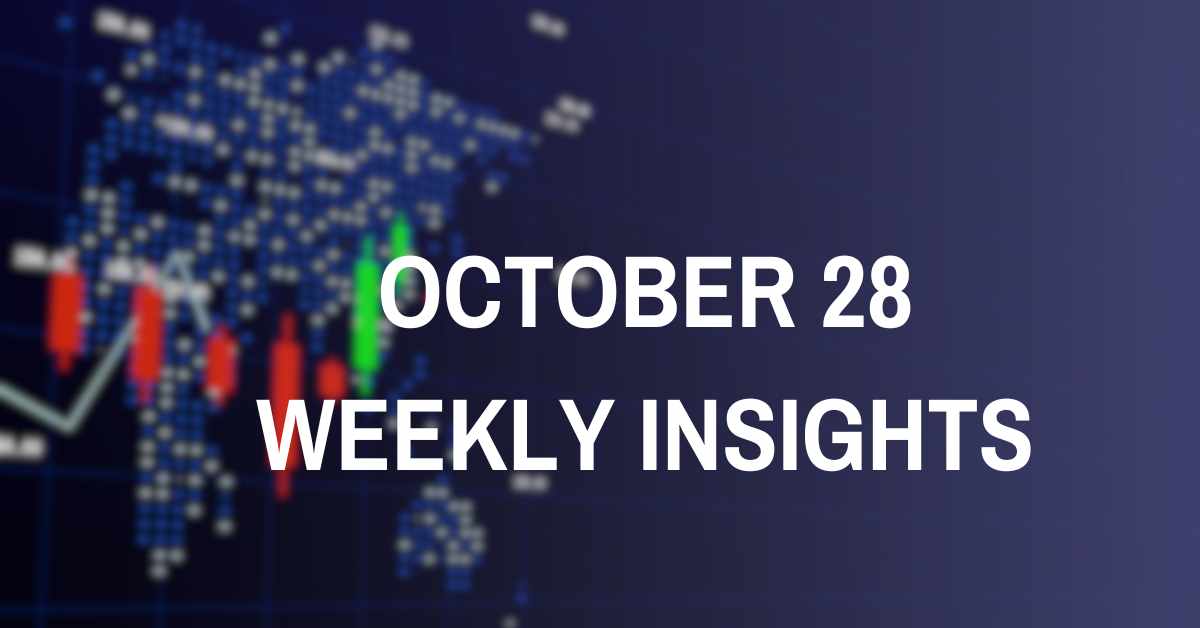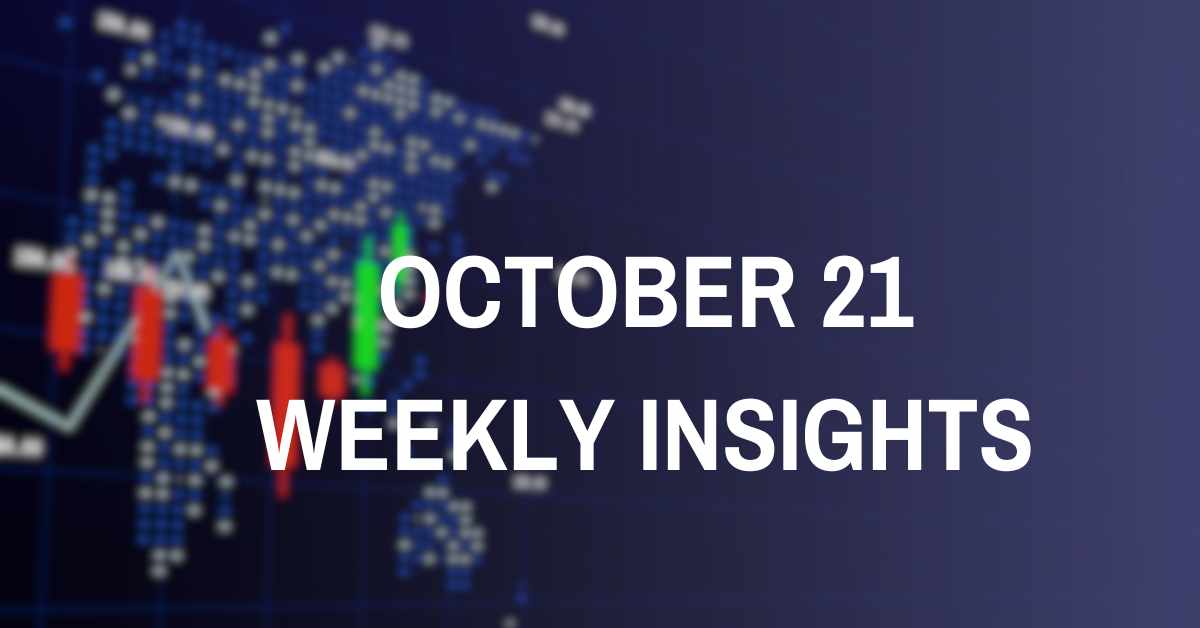Topaz Global Weekly Market Outlook: August 19, 2024
Overview
Global markets are navigating a complex landscape this week, where a blend of positive economic data, central bank maneuvers, and geopolitical tensions creates both opportunities and risks. The U.S. Federal Reserve’s anticipated September rate cut is a pivotal event, with market expectations shifting towards a 0.25% reduction. In Europe, the ECB faces a potential rate cut amid economic slowdown signs, while the BoE’s rate decision hangs in the balance. Meanwhile, Asia-Pacific markets react to both internal economic developments and external pressures from the U.S. and global commodity trends.
Key Themes:
- U.S. Economy:
- Interest Rates: The U.S. economy continues to display resilience, evidenced by stronger-than-expected retail sales data for July, which rose by 1% month-over-month, far exceeding the consensus forecast of 0.4%. This surge in consumer spending suggests that the economy may be more robust than previously thought, which complicates the Federal Reserve’s decision-making process. The labor market also shows signs of strength, with initial jobless claims falling to their lowest level in a month. These factors contribute to a growing consensus that the Federal Reserve will opt for a modest 0.25% rate cut in September, rather than the previously speculated 0.50%. However, the Fed’s forward guidance will be closely scrutinized, as any signals of future rate cuts could lead to heightened market volatility.
- Inflation Dynamics: Inflation remains a focal point, particularly as July’s Consumer Price Index (CPI) data showed a slight deceleration. The headline CPI grew by 0.2% month-over-month, matching the prior month, while the year-over-year increase was 2.9%. Core inflation, which excludes volatile food and energy prices, also rose by 0.2%, with a year-over-year growth of 3.2%. Notably, the rental component continues to exert upward pressure, with rents increasing by 0.4% month-over-month. This persistent rise in housing costs may hinder the Fed’s disinflationary progress, potentially delaying more aggressive rate cuts.
- Market Sentiment: As the Fed’s September meeting approaches, market participants will focus on key speeches at the Jackson Hole Symposium, where Fed Chair Jerome Powell is expected to provide insights into the Fed’s outlook on inflation and economic growth. Any hawkish undertones could dampen the market’s optimism, especially if Powell signals a slower pace of rate cuts or a longer period of elevated rates.
- Europe and the UK:
- ECB and BoE Decisions: In the Eurozone, the economic outlook is mixed. While the second estimate of Q2 GDP growth remained steady at 0.3% quarter-over-quarter, several leading indicators, such as the Purchasing Managers’ Index (PMI), Sentix Investor Confidence Index, and ZEW Economic Sentiment Index, point towards a potential slowdown in the latter half of 2024. The recent decline in these indicators suggests that the Eurozone’s economic recovery may be losing momentum, which could prompt the European Central Bank (ECB) to consider further rate cuts in September. However, the strengthening euro, driven by expectations of reduced imported inflation due to lower energy prices, may give the ECB some room to delay such cuts.
- UK Economic Resilience: In the UK, inflation dynamics are somewhat different. The July Consumer Price Index (CPI) showed a year-over-year increase of 2.2%, slightly below the expected 2.3%, largely due to higher housing and household service costs. However, the core CPI, which excludes energy prices, fell to 3.3% from 3.5% year-over-year, suggesting that underlying inflationary pressures may be easing. The labor market remains tight, with unemployment falling to 4.2% in June, but wage growth has slowed, which could mitigate wage-driven inflation. The Bank of England (BoE) faces a difficult decision in September; while the current inflationary environment might warrant further tightening, the recent cooling in economic activity could justify a pause in rate hikes, especially if GDP growth remains tepid.
- Energy Prices and Currency Strength: Energy prices in Europe continue to decline, providing some relief to consumers and businesses alike. This, coupled with the euro’s recent appreciation, could help temper inflation in the Eurozone, potentially reducing the urgency for further ECB rate cuts. However, any unexpected surge in energy prices, perhaps due to geopolitical tensions, could quickly reverse this trend and place additional pressure on the ECB to act.
- Asia-Pacific:
- Japan’s Economic Recovery: Japan’s economy is showing signs of a solid recovery, with Q2 GDP growing by 3.1% year-over-year, following a revised 2.3% contraction in Q1. This rebound is primarily driven by strong domestic demand, particularly in consumption and business investment. The automotive sector, which had been struggling due to supply chain disruptions, is also beginning to normalize, contributing to the overall positive outlook. However, the political landscape is becoming increasingly important as Japan prepares for a potential change in leadership. The upcoming race for a new premier could lead to significant shifts in economic policy, particularly in monetary policy, as the new leader will need to navigate the economy through its ongoing recovery from decades of deflation.
- BoJ’s Monetary Policy: The Bank of Japan (BoJ) remains in focus, with Governor Kazuo Ueda scheduled to speak before parliament on August 23. His comments will be closely watched for any hints on the BoJ’s future policy direction, especially in light of the recent improvement in economic conditions. The yen’s value could be significantly influenced by both Ueda’s speech and Federal Reserve Chair Powell’s remarks at Jackson Hole, as any divergence in policy between the BoJ and the Fed could impact the yen’s exchange rate. The market will also be attentive to the stance of potential candidates for Japan’s premiership, as their views on monetary policy could shape the BoJ’s actions in the near term.
- Australian Dollar Resilience: The Australian dollar has shown resilience, rebounding strongly on the back of July’s employment data, which significantly exceeded expectations with an increase of 58.2k jobs compared to the forecast of 20.2k. This robust job growth has alleviated some concerns about a potential recession in Australia, despite weak economic data from China, Australia’s key trading partner. The Reserve Bank of Australia’s (RBA) hawkish tone, combined with expectations of a Fed rate cut in September, could keep the Aussie dollar supported in the near term.
- Commodities:
- Gold’s Bullish Momentum: Gold prices continue to rise, reaching new highs as investors seek safe-haven assets amid ongoing global uncertainties. The market’s expectation that the Federal Reserve is nearing a series of rate cuts has been a key driver of gold’s rally. The recent decline in U.S. housing starts, which fell to their lowest level since May 2020, adds to concerns that the Fed’s tightening cycle may be having a more significant impact on the economy than anticipated. If the Fed interprets this as a sign of broader economic weakness, it could accelerate the timeline for rate cuts, further boosting gold’s appeal. Additionally, geopolitical tensions, including conflicts in the Middle East and the World Health Organization’s declaration of a global health emergency due to a fast-spreading mpox outbreak in Africa, are contributing to the demand for gold as a safe-haven asset.
- Oil Market Volatility: The oil market remains volatile, with prices fluctuating in response to mixed signals about global demand and supply. The American Petroleum Institute (API) reported a significant drawdown of 5.205 million barrels in U.S. crude oil inventories, while the Energy Information Administration (EIA) showed an increase of 1.357 million barrels. This discrepancy highlights the ongoing uncertainty in the market. Additionally, concerns about a potential slowdown in demand, particularly as the summer driving season winds down, are weighing on prices. Saudi Arabia’s decision to reduce investment in the oil sector over the next decade also signals a cautious outlook for the industry, suggesting that the kingdom is preparing for a future with lower oil demand and prices. These factors could keep oil prices under pressure in the short term, though any geopolitical disruptions could quickly alter the supply-demand balance.
- Cryptocurrencies:
- Bitcoin’s Consolidation: Bitcoin continues to trade within a broad sideways range between $55,000 and $60,000, as market participants await clearer signals on the next major move. The accumulation by long-term holders has reached the highest level in over three years, indicating strong confidence in Bitcoin’s long-term value. At the same time, the influx of stablecoins into exchanges, which has reached a 17-month high, suggests that there is ample liquidity ready to be deployed into Bitcoin once market conditions become more favorable. Regulatory developments, however, remain a significant risk factor, particularly in the U.S., where Vice President Kamala Harris has pledged to continue the crackdown on the cryptocurrency industry. The recent partial reversal of a proposed class action lawsuit against Binance.US for alleged Hex token price manipulation adds to the regulatory uncertainty. Furthermore, the U.S. government’s transfer of 10,000 BTC (approximately $600 million) to Coinbase Prime has raised concerns about potential market shocks if these coins are sold. Despite these challenges, Bitcoin’s illiquid supply and ongoing accumulation by long-term holders could set the stage for a significant price increase if market sentiment turns bullish.
Economic Calendar Highlights:
- Monday, August 19: U.S. Leading Index (Jul) -0.30% forecast. The data could provide further insights into the overall economic direction, especially in light of the Fed’s upcoming rate decision.
- Tuesday, August 20: China Loan Prime Rate (5Y) expected at 3.85%. This rate is crucial for understanding China’s economic policy direction and its impact on global markets, particularly in the Asia-Pacific region.
- Wednesday, August 21: FOMC Meeting Minutes will offer detailed insights into the Fed’s discussions and could influence market expectations regarding the September rate cut.
- Thursday, August 22: The Jackson Hole Symposium begins. This event is highly anticipated as central bankers from around the world gather to discuss the global economic outlook. Fed Chair Jerome Powell’s speech will be the highlight, with potential implications for global markets.
- Friday, August 23: U.S. New Home Sales (Jul) forecast at 630K. Housing market data remains a key indicator of economic health, and any surprises could impact expectations for Fed policy.
Market Outlook:
- Equities: Global equity markets are experiencing a mix of resilience and caution. The S&P 500 had its best weekly performance of 2024, driven by strong retail sales and low jobless claims. However, high valuations, particularly in technology and AI stocks, are a source of concern, as investors weigh the potential for future earnings against current price levels. The upcoming Jackson Hole Symposium will be critical in shaping market expectations, particularly if Fed Chair Powell provides new insights into the Fed’s monetary policy trajectory.
- Forex: The U.S. dollar index (DXY) has come under pressure as market participants increasingly price in the likelihood of a Fed rate cut in September. This has provided a boost to the euro and pound, both of which are expected to strengthen against the dollar in the near term. The euro, in particular, could benefit from the ECB’s more cautious approach to rate cuts, while the pound might find support from the BoE’s decision to hold rates steady.
- Commodities: Gold continues to be a favored asset in times of uncertainty, with prices likely to test new highs if the Fed signals a more dovish stance. Meanwhile, oil prices are expected to remain range-bound, with supply-demand dynamics in a delicate balance. The mixed signals from inventory data and concerns about future demand are likely to keep oil prices under pressure, though geopolitical risks could lead to sudden price spikes.
- Cryptos: Bitcoin remains in a consolidation phase, with the potential for significant price movement if market conditions shift. The accumulation by long-term holders and the increase in stablecoin balances on exchanges suggest that there is ample liquidity ready to be deployed into Bitcoin. However, regulatory risks remain a key factor to watch, particularly in the U.S.
As the week unfolds, global markets will be closely monitoring central bank actions, economic data releases, and geopolitical developments. The Jackson Hole Symposium is expected to be the highlight, with Fed Chair Jerome Powell’s speech likely to set the tone for the coming weeks. Investors should remain cautious, as volatility could increase, particularly if there are surprises in the economic data or central bank communications.




